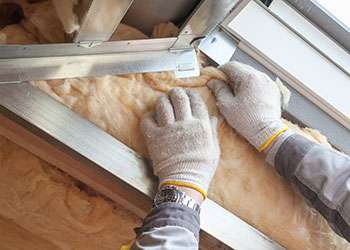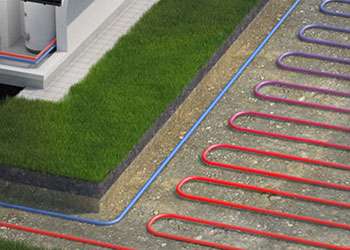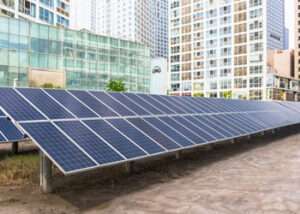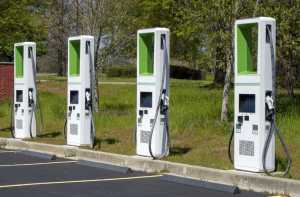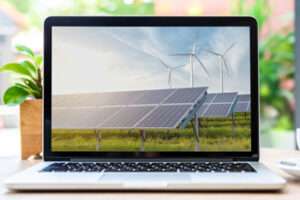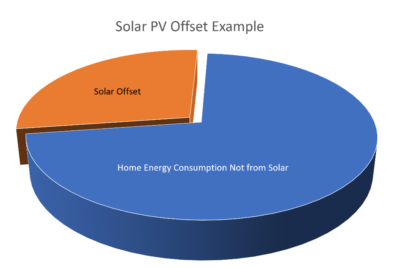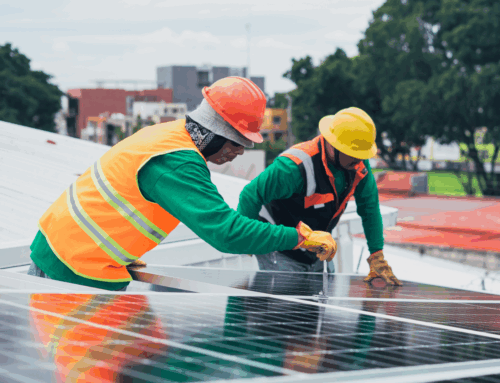Share This Post
Cindy McCabe – February 2021
If you have ever looked into getting a solar PV system, you may have heard or read about a concept called offset and you may have wondered what it means. Sometimes it’s referred to as the percentage that your electric bills will go down after a solar system is turned on. Let’s talk about solar offset, where the number comes from, and how it affects your home.
Solar PV offset is the estimated percentage of your home’s electricity need that will be produced by your solar system. Offset is used to give you an idea of what your electricity bills will look like after your solar system is installed and producing.
Many people want 100% offset for different reasons. Either they like the round number, they want to do something “all the way,” or they want to help the environment as much as they can. 100% offset is not common – it is the exception. Most residential homes in this area can get 20-35% offset. Remember, even if you get 100% offset you will still get charges on your utility bill because you have to at least pay the customer charge.
You may be wondering, why don’t we just fill up your roof with solar panels and sell any unused solar power back to the utility? You don’t make a net gain on selling overproduction to the utility on an annual basis. See my last blog on Net Metering for why that is.
So, let’s find your offset.
First, you look at a recent electric bill. There should be a chart showing you how much electricity you used over the last 12 or 24 months. Your solar installer will add up the last 12 months of your home’s electricity consumption. This number in kilowatt hours, or kWh, is the whole amount that will be offset by the solar energy. An easy way to think about an offset is by thinking about a pizza pie. Before you slice the pizza, the whole pie is the amount of electricity that your home uses in an average year.
The next step is to determine how much solar electricity your solar system will produce. This can be limited by the amount of unobstructed space on your roof, the amount of shading you receive, the slope of your roof, and other factors. Your solar installer will size this for you. Using this info, we cut up the pizza and we take away the slices that signify the electricity that will now be produced by your solar system. If 2 out of your 8 slices are now solar, your offset is 25%.
Now, this 25% could change. No 12-month period of electricity consumption will be the same as the next. Your home electricity usage changes. On one hand, you might create a more efficient home with insulation or other measures; in which case your offset would increase. On the other hand, you might add things to your home that pull electricity, like new pool pump, a jacuzzi, or an increased usage of electric space heaters. There could also be an increase in the number of people staying in the house, like we are seeing now. When your normal electricity consumption increases, your offset goes down.
On another note, many people want to put solar on a roof when they’ve just moved into a new home, and they may not have 12 months of electricity bills yet. In that case, your solar installer may ask you to wait until you have at least 3 months of bills in your new home and they will extrapolate the rest of the projected consumption.
In the end, any renewable offset to your current utility usage is a good thing. Your solar system proposal should include this estimate. If you have more questions before or after installation, you should talk to your solar installer. Solar installers want you to be happy, satisfied customers.
Cindy McCabe is the Residential Solar Program Manager for the Montgomery County Green Bank. She has worked in the solar industry for the past six years with responsibilities including project management, solar system design, inspection coordination, site survey coordination, operations management, and sales. Cindy lives in Rockville, MD and considers herself an avid environmentalist.

